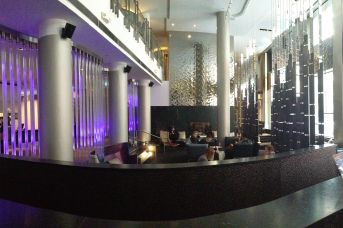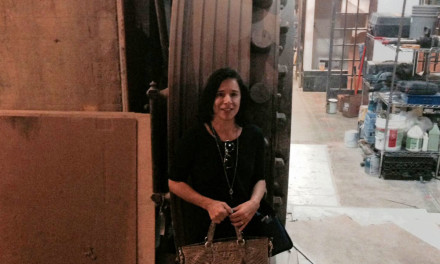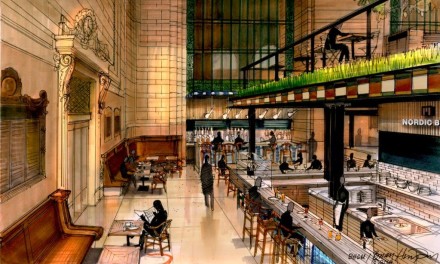
NEW YORK – One month ago, the world’s first W hotel on Lexington Avenue finished overhauling its “Living Room,” the couch-and-lamp-filled public area located just off the check-in area.
Now you’re probably thinking, “So what? A lobby’s a lobby.”
But this one’s special since it was the very first “Living Room,” W’s lobby concept that arguably helped revolutionize today’s mainstream-chain lobbies as Gen Xers increasingly wanted to work on their laptops in public spaces like they do in Starbucks cafes instead of working in their rooms. And it hadn’t been touched to any large degree since the day the hotel opened, so a little bit of hotel history went away with the renovation. On top of the history, the hotel is massive with nearly 700 rooms, which makes it one of the largest W hotels in the system.
I sat down last week with general manager Anna MacDiarmid, who previously ran the W Hoboken across the river, for an update.
Don’t expect any dramatic structural changes; the updates are almost completely design-related, she told me. The space, for instance, still involves a sunken living room, floor to ceiling windows and a jumble of couches and chairs. But the look is completely different. Highlights:
- Colors: Earth tones have been replaced with an array of silver, bronze and other metallic tones,
- Natural light: Stained glass windows have been replaced with clear glass, letting in more light,
- Texture: Expect to see hammered metals, upholstered chairs, slate-topped tables, a plexi-glass design piece that sports a New York City skyline (if you view it from an angle) and acts as something of a room divider,
- Carpeting: Wall-to-wall carpeting that touts a simple outline of the city skyline.
The look reminds me of a New York version of the W London in Leicester Square, only less outrageous and more suited to business people. Power outlets, for instance, are plentiful and easy to find.
The W New York’s lobby update was the most visible part so far of a broader improvement program that the hotel will carry out over the next few years, MacDiarmid told me. The meeting space has already been updated with the metallic-city theme.
“It needed a full renovation,” she said, referring to the lobby space. “The idea for us was to make it an open space so people know there’s a hotel inside. There’s a lot to see, and now, you can see and be seen.”
When I was there, I was one of many people with their nose buried in their laptop or mobile device. My chair was comfortable enough to do work for a period of time with the free lobby Wi-Fi. Waiters asked people if they wanted to order anything.
“You’re forecasting the future”
Originally a David Rockwell design, the hotel was conceived of with a “heart of New York” theme due to its Midtown location on Lexington Avenue near iconic destinations such as Fifth Avenue and Grand Central Station, said Gray Shealy, former global design director of W hotels who now leads the hospitality program at Georgetown University.
“It was a really interesting space. I remember going in when it first opened and being surprised,” he told me during a telephone interview. “There were pressed ginko leaves in the stained glass windows. At the time, it was extremely innovative.”
But the Living Room’s design had a hard time withstanding the test of time, which – due to the recession – was longer than average. In the past, he said, hotels will renovate spaces every seven years or so, but when hard times hit hotel owners tried to hang on to older designs for a longer period of time to save money.
“We’re no longer seeing seven-year renovation cycles,” he said. “We’re seeing some hotels that have to last 10-plus years, which is a challenge from a design perspective.”
That’s why designing hotel interiors can be so challenging. “You’re forecasting the future,” he said.
The hotel’s brand-new look may be glittery, but it will be timeless due to the color scheme of metals, blacks and glass, he said.
More change to come
The lobby’s bar now has a selection of draft beers, and the bar doubles as a morning hub for to-go coffee ($4 or $5), pastries, yogurt and juices. Bar prices did not change from before the renovation, she said.
The property’s owner, Host Hotels & Resorts, last revamped the W’s rooms seven years ago and the plan is to update them again in about two years. The restaurant located off the Living Room is still awaiting a revamp. There are no changes to report at this time for the Whiskey Blue, the long-time bar operated by the Gerber Group also located off the lobby closer to the hotel’s entrance.
The hotel caters overwhelmingly to business travelers, especially consultants, she said, with just 14% of customers a part of larger groups, MacDiarmid said.
Is something missing?
There is, by the way, one significant difference that you might notice.
You’ll no longer hear DJs “spinning records” on Thursday to Friday nights in the Living Room. Instead, guests will find free samples of cocktails at an evening happy hour and occasional small events such as book signings.
The DJs, MacDiarmid told me, are also part of history.
“Everyone’s doing them. A year ago we said we’re not going to do them anymore,” she said. We were the first ones to stop.”
Readers: What’s important to you in a hotel lobby?
Photos by Barb DeLollis






